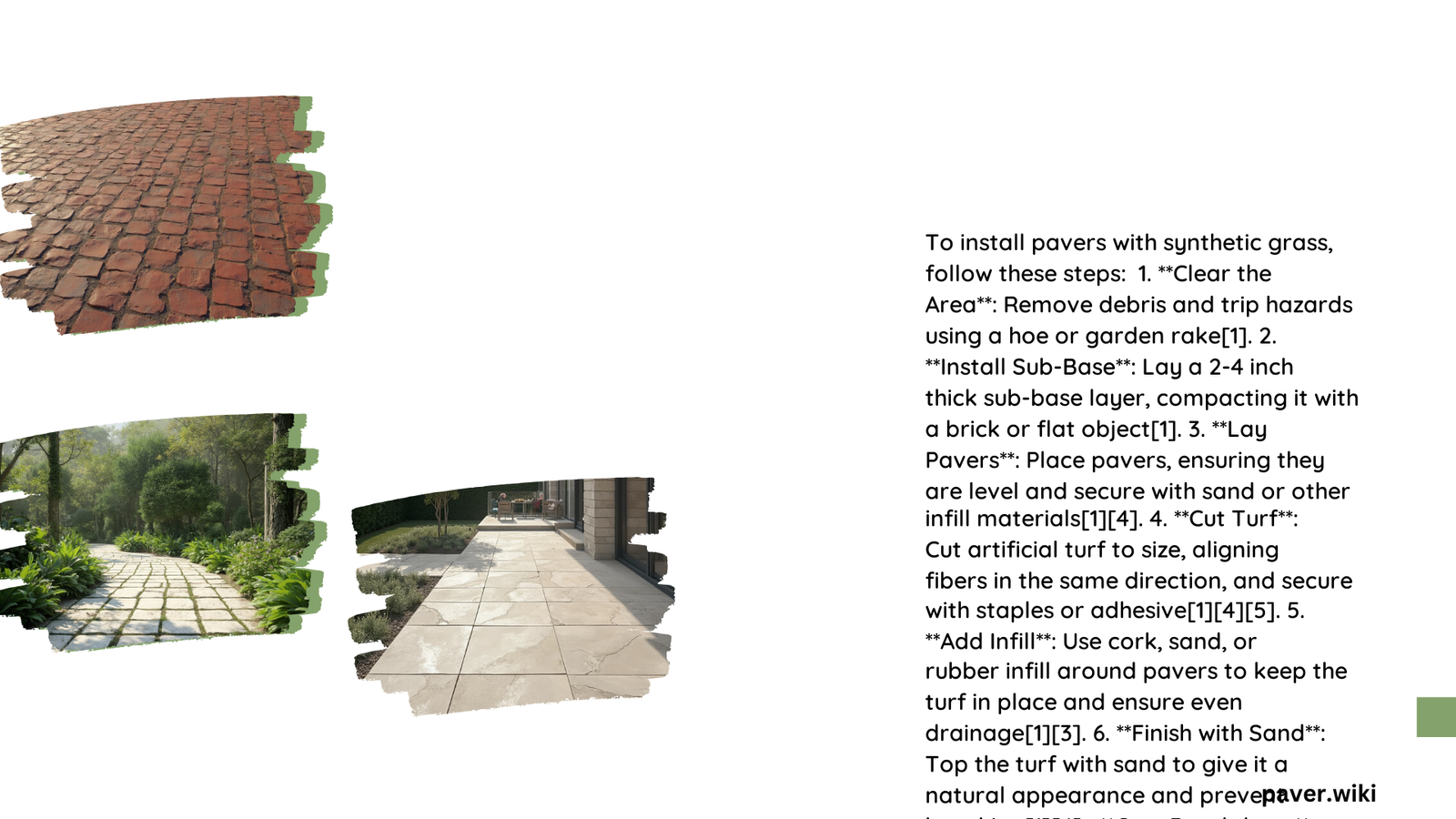Pavers with synthetic grass offer a revolutionary landscaping solution that combines the durability of stone surfaces with the aesthetic appeal of lush green turf. Homeowners and designers can transform outdoor spaces by strategically integrating artificial grass between carefully laid pavers, creating visually stunning and low-maintenance environments that remain vibrant year-round. This comprehensive guide explores the intricate process of successfully implementing synthetic grass between pavers, addressing installation techniques, drainage considerations, and long-term maintenance strategies.
What Are the Essential Preparation Steps for Pavers with Synthetic Grass?
Base Layer and Surface Preparation
Before installing synthetic grass between pavers, proper groundwork is crucial. Follow these critical preparation steps:
- Paver Layout Considerations
- Maintain 3-4 inch gaps between pavers
- Ensure level and clean surface
-
Remove excess concrete or stone debris
-
Drainage Foundation
- Add 2-inch base layer of Class Two Road Base
- Create slight 1-2% slope for water runoff
- Consider permeable paver designs
Tools and Materials Checklist
| Tool/Material | Purpose | Estimated Cost |
|---|---|---|
| Utility Knife | Precise Cutting | $5-$15 |
| Turf Nails | Securing Grass | $8-$20 |
| Tamper Tool | Surface Leveling | $30-$50 |
| Infill Material | Weight and Support | $0.50-$1.50/lb |
How to Install Synthetic Grass Between Pavers?

Installation Technique
Successful installation requires meticulous attention to detail:
- Grass Preparation
- Roll out synthetic grass
- Allow material to expand in sunlight
-
Ensure consistent blade direction
-
Securing Process
- Use turf nails every few inches
- Avoid deep nail penetration
- Cut edges precisely along paver lines
Infill Application Strategy
Proper infill is critical for long-term performance:
- Recommended infill quantity: 1 lb per square foot
- Suggested materials:
- Silica sand
- Rubber granules
- Cork infill
What Maintenance Practices Ensure Longevity?
Cleaning and Care
Regular maintenance preserves the synthetic grass’s appearance:
- Weekly cleaning with stiff bristle broom
- Monthly thorough rinsing
- Immediate debris removal
- Avoid harsh chemical cleaners
Repair and Replacement Guidelines
- Inspect seams quarterly
- Replace damaged sections promptly
- Reapply seam tape as needed
What Are the Key Benefits?
Performance Advantages
- Durability
- 15-20 year lifespan
-
Consistent aesthetic appeal
-
Cost-Effectiveness
- Reduced water consumption
- Minimal maintenance expenses
-
Estimated annual savings: $1,000
-
Environmental Impact
- Zero water requirements
- No chemical fertilizers
- Reduced carbon footprint
Cost Considerations
Investment Breakdown
- Initial installation: $10-$20 per square foot
- Maintenance costs: Approximately $100-$300 annually
- Long-term savings: Significant reduction in landscaping expenses
Professional Tips
- Always use high-quality synthetic grass
- Prioritize proper drainage solutions
- Consider professional installation for complex layouts
Conclusion
Pavers with synthetic grass represent an innovative landscaping approach that combines aesthetic beauty with practical functionality. By understanding installation techniques, maintenance requirements, and potential benefits, homeowners can create stunning outdoor spaces that remain vibrant and low-maintenance for years.
